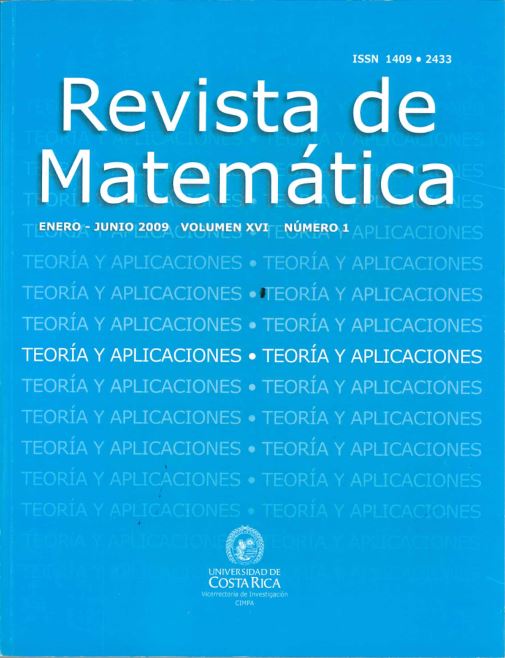Resumen
Evaluar la Calidad de Vida de los pacientes es difícil porque junto al cambio real (alpha) muchos pacientes que experimentan un cambio en su salud (diagnostico de cáncer, por ejemplo), pueden cambiar sus estándar internos de medida (recalibración), sus valores (repriorización), o incluso reconceptualizar lo que antes entendían por Calidad de Vida (Cambios Beta y Gamma). Este fenómeno es conocido como “Response Shift” y justifica la paradoja descrita en la literatura por la cual pacientes con graves problemas de salud perciben una Calidad de Vida más alta de la estimada por médicos y familiares.
En este trabajo, después de evaluar los problemas existentes a la hora de definir el constructo Calidad de Vida, centramos la atención en las dimensiones del Response Shift. Se discuten las limitaciones del método clásico de Ahmavaara y se proponen soluciones para detectar y evaluar las componentes Beta y Gamma del Response Shift.
Citas
Ahmavaara, Y. (1954) “Transformation analysis of factorial data”, Annals of the Academy of Science Fennicae, Series B 881(2): 54–59.
Allison, P.J.; Locker, D.; Feine, J.S. (1997) “Quality of life: A Dynamic Construct”, Soc. Sci. Med. 45(2): 221-230.
Bartholomew, S. (2002) Implicit Theories and Beta Change in Longitudinal Evaluations of Training Effectiveness: An Investigation Using Item Response Theory. PhD Disertation. Virginia Polytechnic Institute and State University.
Carr, A.J.; Gibson, B.; Robinson, P.G. (2001) “Is Quality of Life determined by expectations or experience?”, British Medical Journal 322(19): 1240–1243.
Carver, C.S.; Scheier, M.F. (1982) “Control Theory: a useful conceptual framework for personality-social, clinical and health psychology”, Psychological Bulletin 92(1): 11–135.
Daltroy, L.H.; Larson, M.G.; Eaton, H.M.; Phillips, C.B.; Liang, M.H. (1999) “Discrepancies between self reported and observed function in the elderly: the influence of response shift and other factors”, Social Science & Medicine 48: 1549–1561.
Daltroy, L.H.; Larson, M.G.; Eaton, H.M.; Phillips, C.B.; Liang, M.H. (2000) “Discrepancies between self reported and observed function in the elderly: the influence of response shift and other factors”, (In Adaptation to Changing Health. Response Shift in Quality-of-Life Research. Ed. American Psycological Association: 189–200).
Escoufier, Y. (1973) “Le traitement des variables vectorielles”, Biometrics 29: 750–760
Foltz, A.T. (1987) “The influence of canceron self-copncept and life quality”, Seminars in Oncology Nursing 3(4): 303–312.
Gibbons, F.X. (1999) “Social Comparison as a mediator of response Shift”, Social Science & Medicine 48: 1517–1530.
Golembiewski, R.T.; Billingsley, K.; Yeager, S. (1976) “Measuring Change and Persistence in Human affairs: types of changes generated by OD desings”, Journal of Applied Behavioural Science 12: 133–157.
Haas, B. K. (1999) “A Multidisciplinary Concept Analysis of Quality of Life”, Western Journal of Nursing Research 21(6): 728–743.
Haes J.C.; de Duiter, J.H.; Tempelaar, R.; Pennink, B.J. (1992) “The distinction between affect and cognition in the quality of life of cancer patients-sensitivity and stability”, Quality of Life Reseach 1(5): 315–322.
Heyink, J. (1993) “Adaptation and well-being”, Psychological Reports 73: 1331–1342.
Howard, G.S.; Ralph, K.M.; Gulanick, N.A.; Maxwell, S.E.; Nance, D.; Gerber. S.K. (1979) “Internal invalidity in pretest-postest self reporting evaluations and a reevaluation of retrospective present”, Applied Psychological Measurement 3: 1–23.
Howard, G.S.,; Dailey, P.R. (1979) “Response-shift bias: A source of contamination of self- report measures”, Journal of Applied Psychology 64: 144–150.
Lavit, C.(1988) Analyse Conjointe de Tableaux Quantitatifs. Masson, Paris.
Lavit, C.; Escoufier, Y.; Sabatier, R.; Traissac, P. (1994) “The ACT (STATIS method)”, Computational Statistics and Data Analysis 18: 97–119.
L’Hermier des Plantes, H. (1976) Structuration des Tableaux à Trois Indices de la Statistique: Théorie et Application d’une Méthode d’Analyse Conjointe. Thèse de Doctorat de 3ème Cycle, Université des Sciences et Techniques du Languedoc.
Mishel, M.H. (1988) “Uncertainty in ilness”, Journal of Nursing Scholarship 20(4):225–232.
Mortimer, J.D.; Finch, M.D.; Kumka, D. (1982) “Persistence and change in development: The multidimensional self-concept”. in: P.B. Baltes & O.G. Brim (Eds.) Life-Span Development and Behavior 4, Academic Press, New York: 263–309.
Schmitt, N. (1982) “The use of anriables of covariance structures to assess Beta and Gamma changes”, Multivariate Behavioral Research 17: 343–358.
Schwartz, C.E.; Sendor, R.M. (1999) “Helping others helps oneself: respose shift effects in peer support”, Social Medecine 48: 1563–1575.
Schwartz, C.E.; Daltroy, L.H. (1999) “Learning from unreliability: the importance of inconsistency in coping dynamics”, Social Science; Medicine 48: 619–631.
Schwartz, C.E.; Sprangers, M.A.G. (1999) “Methodological approaches for assessing respose shift in longitudinal quality of life research”, Social Medecine 48: 1531–1548.
Setien, M.L. (1993) Indicadores Sociales de Calidad de Vida. CIS, Madrid.
Taris, T. (2000) A Primer in Longitudinal Data Analisis. Sage, London.
Wilson, I.B. (1999) “Clinical Understanding and Clinical Implications of Response Shift”, Social Science; Medicine 48: 1577–1558.
Wilson, I.B. (2000) “Clinical Understanding and Clinical Implications of Response Shift”. (In Adaptation to Changing Health. Response Shift in Quality-of-Life Research, Ed. American Psycological Association.)

